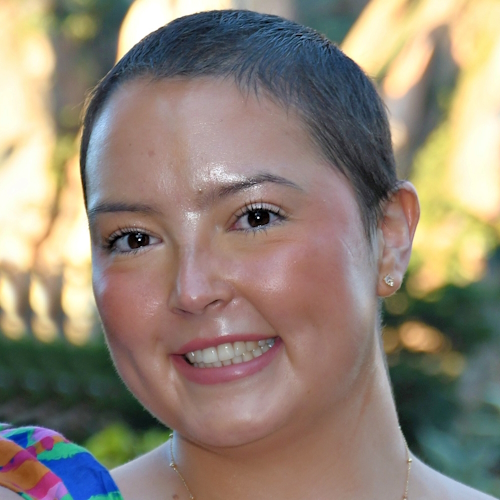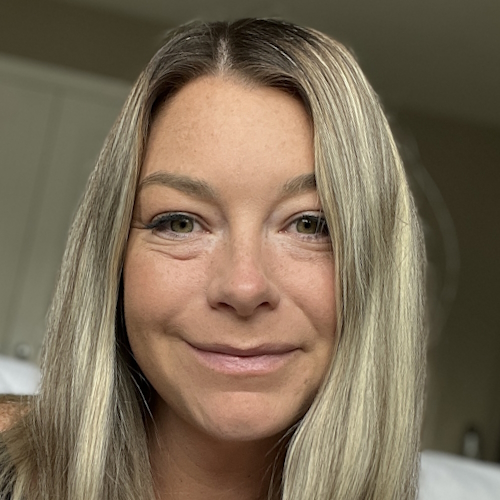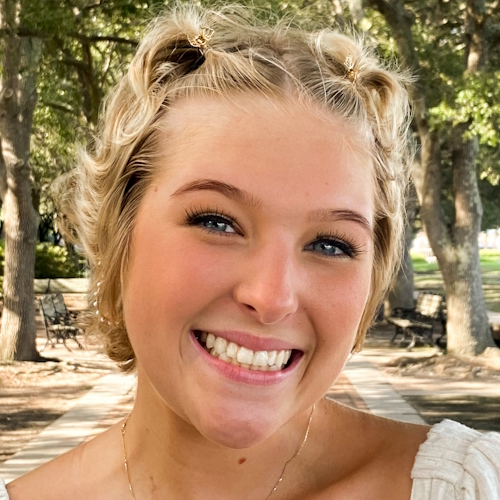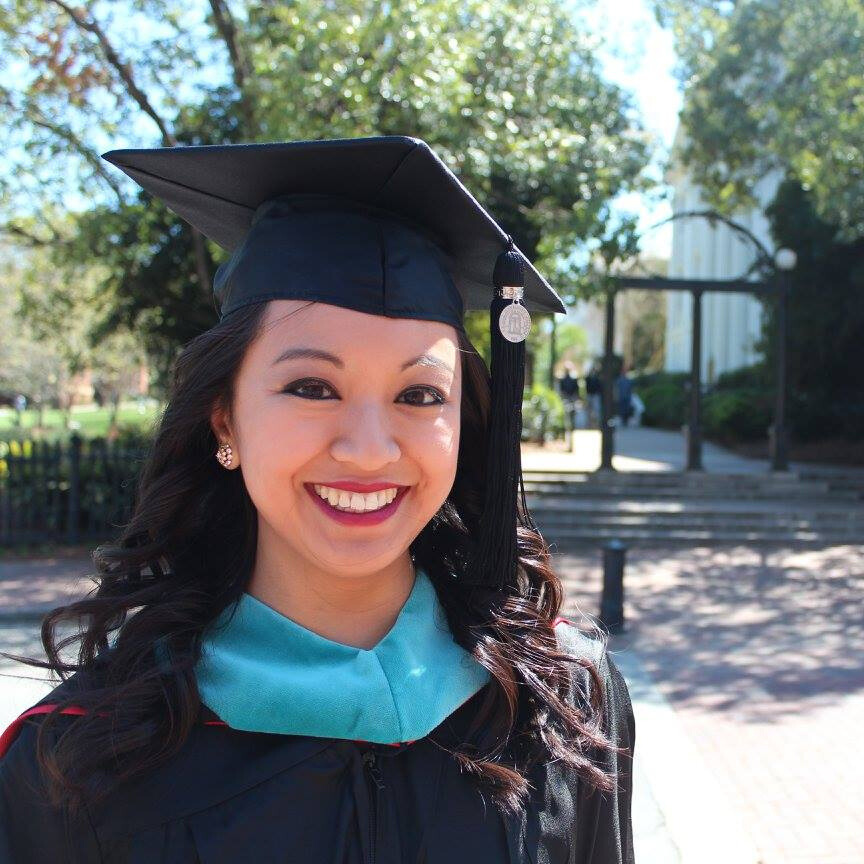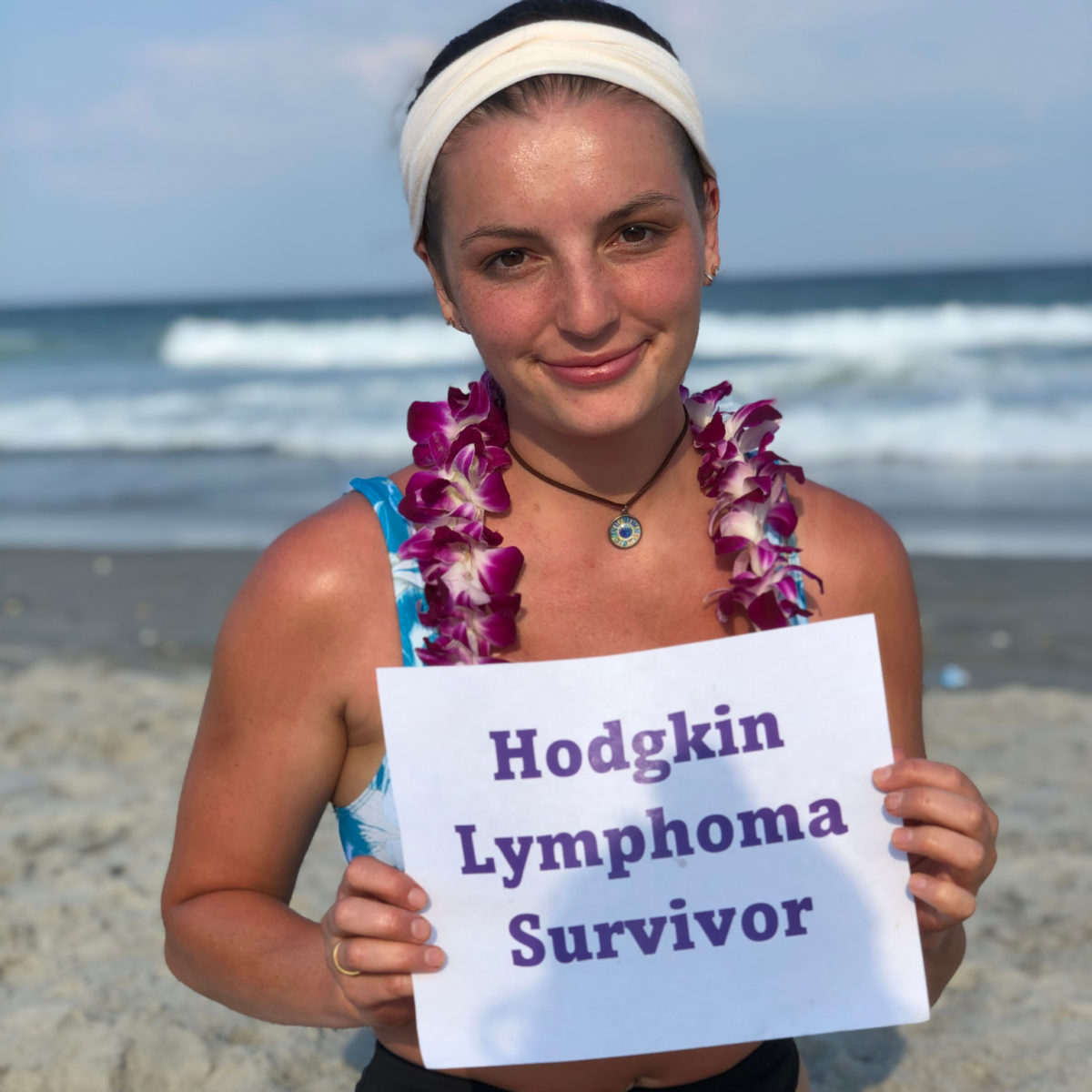Moe’s Stage 2B Relapsed Classical Hodgkin’s Lymphoma Story
Moe was diagnosed with classical Hodgkin’s lymphoma at just 19, as a medical school student. He went through 12 cycles of ABVD chemotherapy. Unfortunately, the cancer was refractory, meaning it did not respond to first-line treatment.
He then underwent 4 cycles of DHAP chemotherapy, a splenectomy, MINE-R chemotherapy, and autologous bone marrow transplant before reaching remission. Thank you for sharing your story, Moe!
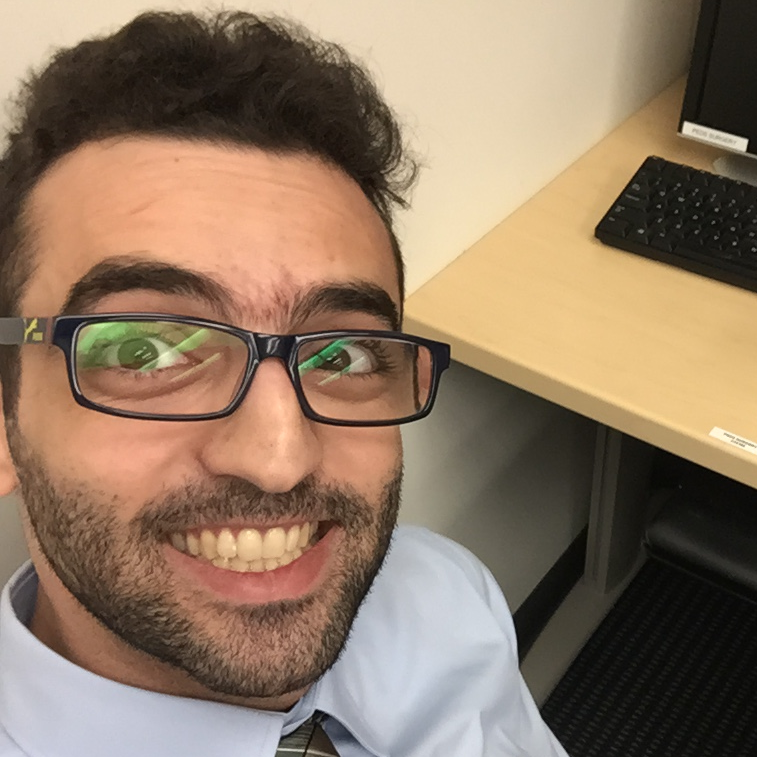
- Name: Moe C.
- Diagnosis (DX)
- Hodgkin’s lymphoma
- Classical
- Age at DX: 19 years old
- 1st Symptoms
- Fatigue
- Night sweats
- Weight loss
- Treatment
- ABVD chemo
- DHAP chemo (2x)
- Surgery (splenectomy)
- MINE-R chemo
- Autologous bone marrow transplant
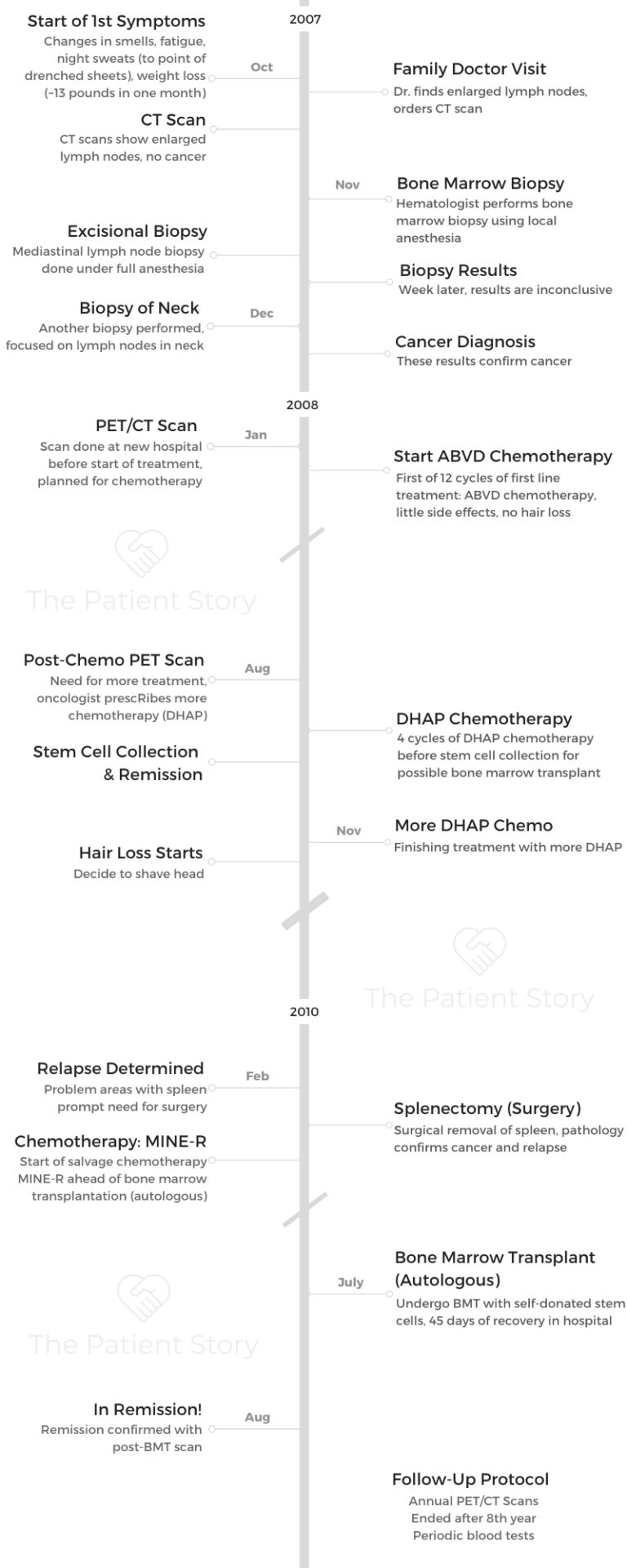
- 1st Symptoms and Scans
- When did you realize something was wrong?
- What happened at the first doctor visit?
- Your family kept you in the dark about the possibility of cancer
- Describe the CT scan
- Describe the bone marrow biopsy
- That's when you first heard "cancer"
- Describe the excisional biopsies (2)
- Describe the tuberculin skin test
- When did you get the biopsy and scan results back?
- Hodgkin's Lymphoma Diagnosis
- Treatment Decisions
- 1st-Line Chemotherapy and Side Effects
- 2nd-Line Treatment: DHAP Chemotherapy
- Relapse & Bone Marrow Transplant
- Reflections
This interview has been edited for clarity. This is not medical advice. Please consult with your healthcare provider for treatment decisions.
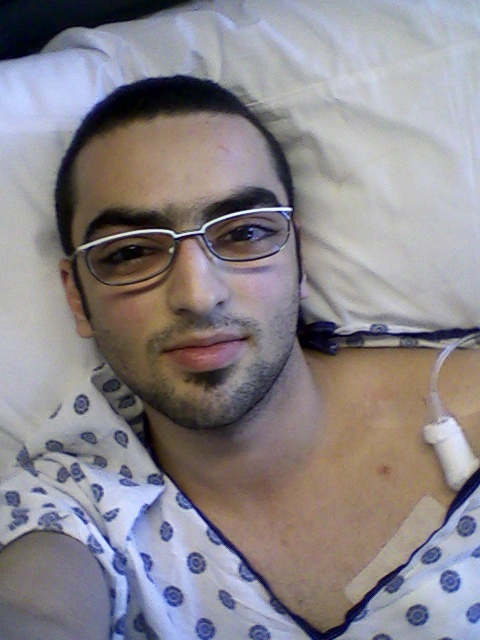
You will have bad days, but please make sure that you are not alone. A family member, a friend, a spouse, a son or even a neighbor can provide you with help and support when needed.
You do not have to fight this battle alone. So stay strong, keep your head up high, and I will be one of the many survivors waiting for you at the end of the tunnel.
Dr. Moe C., Hodgkin’s Lymphoma
1st Symptoms and Scans
When did you realize something was wrong?
My story begins in October 2007. I was a second-year medical student when I started to have a loss of appetite. One of my favorite foods at that time was a double cheeseburger from McDonald’s, and I was not able to bear the smell of it at that time.
I did not pay attention to what was going on, especially that some exams were approaching. I was living alone at that time, and my family was away.
Things started to get worse with fatigue and night sweats. I remember waking up at night with my sheets drenched in sweat.
I went to my family for a visit. That’s when I noticed that I had an almost 6 kilograms (13 pounds) weight loss in a month’s period.
»MORE: Hodgkin’s lymphoma patients share common first symptoms
What happened at the first doctor visit?
We went to a family doctor, who recommended a CT scan after he found some enlarged lymph nodes in my armpit and neck.
Your family kept you in the dark about the possibility of cancer
Since I’m of Middle-Eastern descent, it is unfortunately common for family members to hide bad news from the one affected. So I had no idea what was going behind the scenes, especially since I was 19 years old and had zero experience with cancer.
Describe the CT scan
The first thing that I had was a whole body CT scan, and I can still remember the heat you feel inside when they inject the contrast material. This was followed by a brain MRI and the annoying sounds it makes.
Describe the bone marrow biopsy
One of the most horrible experiences in my life was the bone marrow biopsy. It was performed in a clinic with local anesthesia, and I had no clue what was going on.
It was November 2007. I was taken to another doctor. I later found out he was a hematologist, who told me that he wanted to give me an injection in my buttocks area and that I must not move while he was doing that.
It turned out that he was going to perform a bone marrow biopsy. He only administrated local anesthesia, and then he advanced the thick needle of the biopsy.
It was one of the most severe pains I had in my entire life. I started to scream and shout simultaneously, while my dad and uncle held me in position.
At that time, I didn’t even know I had lymphoma. I was instructed to face a wall lying down on a cold clinic bed and to bend my knees. I screamed a lot that day and cried a lot, and I still remember the doctor telling me not to move and to “man up.”
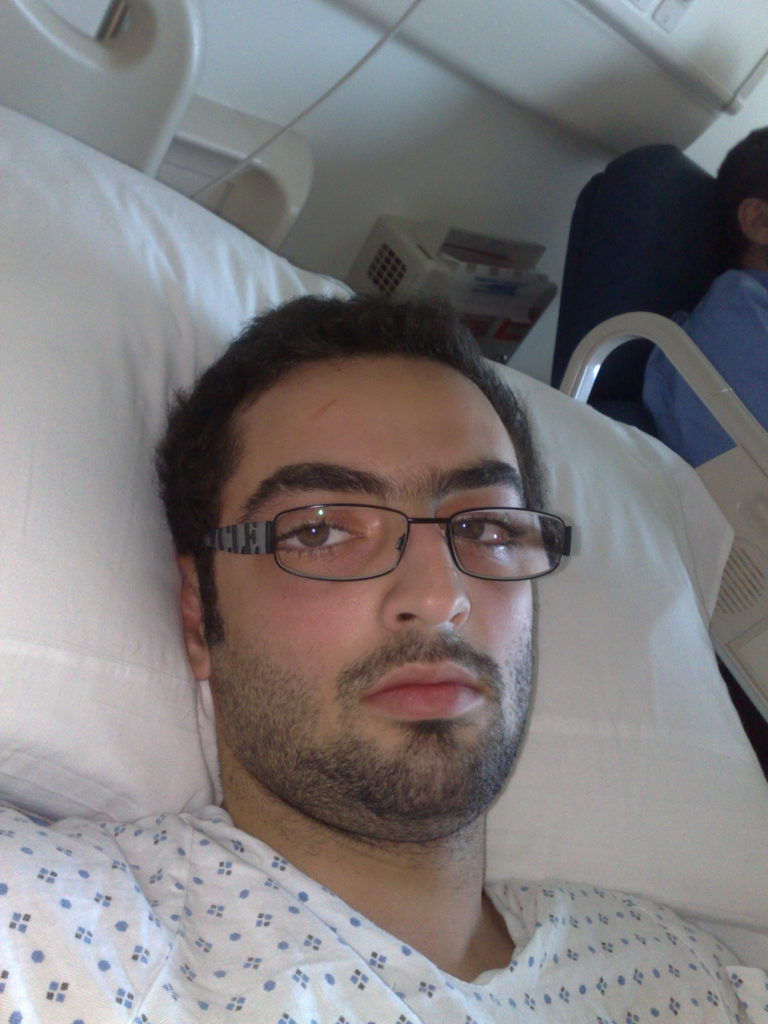
That’s when you first heard “cancer”
When I came back home, I demanded to know what was going on and why am I undergoing all of these extensive tests. That is when my family told me that they suspected cancer.
I started my search online about lymphoma since it was at the top of differential diagnosis.
Describe the excisional biopsies (2)
I had a mediastinal biopsy (the area between the two lungs), and due to bad processing, this biopsy was insignificant. The procedure was done under general anesthesia.
When I woke up, I found all of my family members there. It is such a blessing to have an amazing family by your side.
The second biopsy was taken from my neck, and it was done under local anesthesia. It was quite uncomfortable to be awake while someone was poking in my neck, but it was painless. The result came back with a diagnosis.
Describe the tuberculin skin test
After this biopsy, I had a tuberculin test, the skin test that they do in order to know if you had tuberculosis or not, which is not accurate. My result was borderline, and a family physician decided to start me on anti-TB medications.
When I started to have red urine, I got very scared, but then I was told it was just a side effect from the medication. At that time, I was back in medical school in Jordan away from my family, so it was a weird experience.
When did you get the biopsy and scan results back?
The biopsy and the scan results came back very fast before diagnosis, around the day after. Since I had no idea I had cancer at that time and I was 19, I did not have any anxiety or fear. I believe the scanxiety kicked in after starting treatments.
»MORE: Dealing with scanxiety and waiting for results
Hodgkin’s Lymphoma Diagnosis
How did you learn the diagnosis?
After the bone marrow biopsy, I asked my mother what was going on and what they know. She sat down with me, tearful, and told me about the diagnosis.
Being a second-year medical student, I searched for the disease, and I educated myself enough, but nothing can prepare you for what’s to come.
How did you process news of the cancer diagnosis?
I was pretty calm. No crying. I sat down and Googled what Hodgkin’s lymphoma was. It was a self-defense mechanism I believe is called “intellectualization.”
»MORE: Processing a cancer diagnosis
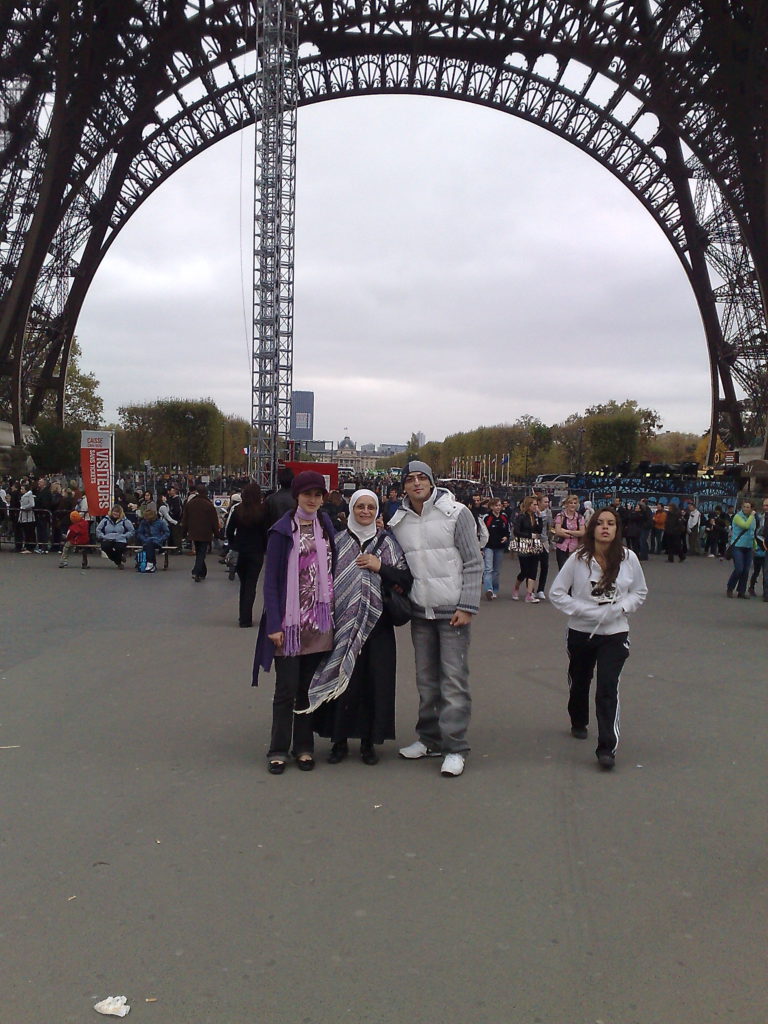
How did you break the news to loved ones?
They were the one who broke the news to me. Then I told my close friends. Again, I was young with zero life experience at that time, so it was not as traumatic as it was expected.
»MORE: Breaking the news of a diagnosis to loved ones
Treatment Decisions
How did you decide where to get treatment?
After the biopsy was definitive, an immediate decision was made to start the treatment in the same dreadful clinic that I had the bone marrow biopsy at.
The issue of fertility preservation came up
They were preparing the first dose when my dad asked about infertility and if they could offer sperm banking.
At that moment, the doctor said that it was unethical since I was not married, and he did not approve.
Later we found out that he was making those decisions based on some personal religious point of view. My dad told him to stop the process, and we left the clinic.
»MORE: Fertility preservation and cancer treatment
Did you get a second opinion?
We sought out a second opinion after the sperm banking issue, and we went to Lebanon. They reexamined the pathology slides, and I had my first PET-CT scan.
I was also introduced to “The Red Room,” which is utilized to give a semen sample in order to complete the sperm banking process.
How was your medical team?
It was the best team I could ever pray for, including my oncologist and his colleague, his assistant and the nursing staff. I am still friends with all of them. They are the reason I am still here talking and breathing.
They are the real heroes in my story.
1st-Line Chemotherapy and Side Effects
Did you get a port or a PICC line?
I had a port inserted. Over the span of all my treatments, I had 3 ports inserted and removed. I insisted on removing it every time a treatment was done, and then they inserted a new one when I had a relapse and so on. I was young and foolish.
Describe the ABVD chemotherapy cycle
ABVD was a breeze compared to what came after. One of the things that I was mostly worried about was my family, especially my mother.
I pushed myself to the limit in order to stay strong, and maybe that is what made the first line of treatment less hard on me.
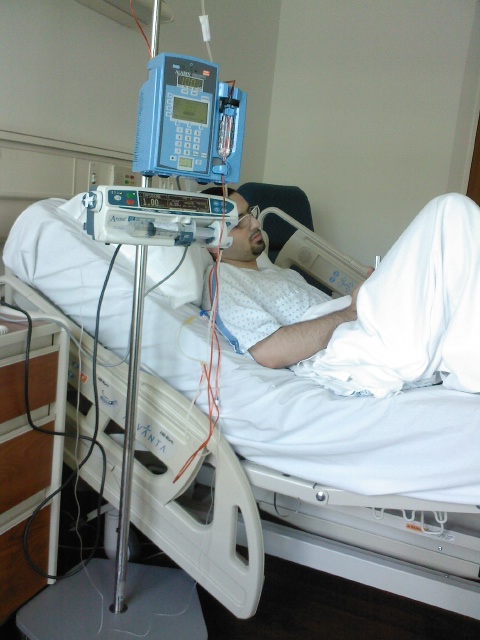
Describe the ABVD chemo side effects
The only side effect that I had from ABVD was the nausea, which was controlled by ondansetron.
»MORE: Read our comprehensive ABVD chemotherapy info page
Did you lose your hair?
I did not lose my hair, and surprisingly, my hair’s texture changed from frizzy and coarse to smooth and silky, which was so weird.
»MORE: The Patient Story: How to Cope with Hair Loss
How was the post-ABVD PET scan?
I remember that time that my sister was undergoing scans suspecting she had cancer as well. Thankfully, all her tests came back negative.
After getting the news, we were in the car together, and I remember hugging her and saying, “Thank God it wasn’t you,” while crying.
After the ABVD, I had a feeling that my cancer story wasn’t over. I had a feeling that there would be a second battle. When we got the news my cancer was still there, I was with my mother and sister.
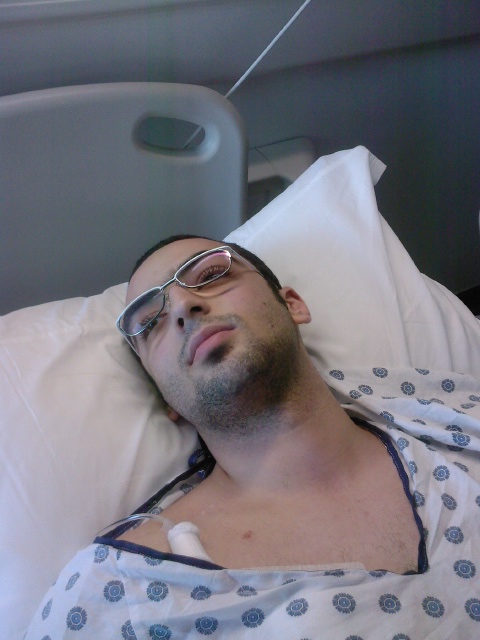
2nd-Line Treatment: DHAP Chemotherapy
Describe your experience with DHAP salvage chemotherapy
Everything went downhill when I started DHAP.
The nausea was very poorly controlled with all medications available, and my hair started to fall in chunks on the second cycle.
We were in France at that time, and I couldn’t believe how fast things were deteriorating. I was medically doing okay, but it was too much to process, I believe.
They prescribed DHAP chemotherapy and to start the process of preparation for a bone marrow transplant, including stem cell collection.
What did you do after losing hair?
My mother helped me shave my hair at that time, and I had the idea to start my own YouTube channel to document what was going on. The idea saw the light when I started the actual bone marrow transplant procedure.
»MORE: Dealing with hair loss during cancer treatment
How did you start the process for the bone marrow transplant?
The only problem with being in France was the fact that I didn’t speak the language at that time, so it was very difficult to communicate. The stem cell collection happened during my hospital stays in France while taking a cycle of DHAP.
Describe the stem cell collection procedure
I was taken by an ambulance with my mother to another facility for collection. I was asked to spread my arms while laying on a bed, and they inserted 2 large needles in my veins, which were hooked to a processing machine.
It was the longest 6 to 8 hours of my life. I was not able to bend my arms at all, and my mother provided help when my nose itched or I was in need of water or something else.
After stem cell collection was completed, I was taken back to the hospital. Soon after, we went to Paris in order to have a change of scenery before heading back home.
After DHAP and stem cell collection, you were found to be in remission
I was declared in remission after 4 cycles of DHAP, and it was decided to keep me under close observation. The second round of DHAP happened a couple months after in November that year.
Relapse & Bone Marrow Transplant
When did you learn you had relapsed?
In February 2010, problem areas in the spleen got larger in size, and I was considered to be having a relapse. I underwent splenectomy, which confirmed the diagnosis of a relapse.
I was started on a second-line salvage chemotherapy of MINE-R in preparation for an autologous bone marrow transplantation.
Describe the MINE-R chemo before the bone marrow transplantation
The MINE-R was really difficult. I never had vomiting during my previous 2 regimens, but this time, I started to have a yellow vomit coming out every now and then. It was never controlled by any medication.
The hair did not return by the time we started MINE-R, so I have no clue how fast would it have fallen.
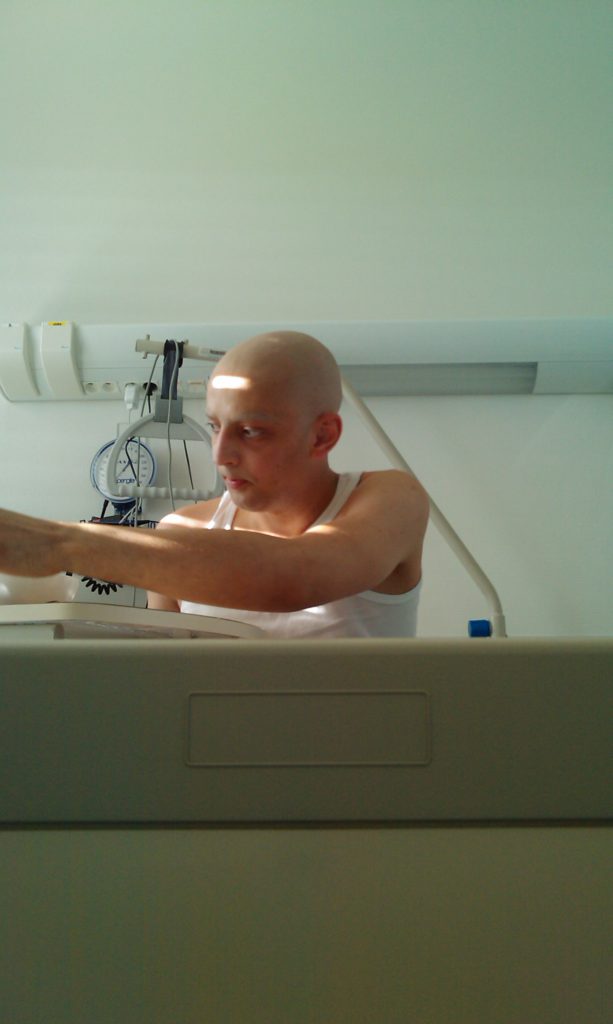
Describe the bone marrow transplant preparation
I was first admitted in the hospital and started on the highest dose of MINE-R. Then the bone marrow transplant began. I had facial swelling that was expected to be an abscess, but it wasn’t. I was informed that at any moment, I might be transferred to the ICU in case I deteriorated, which did not happen.
Some of the most horrible side effects were the oral thrushes and ulcers. They started to appear during the first week, and I was unable to swallow. I was instructed to use carbonated drinks as a mouthwash, which was helpful, in addition to other medications.
Throughout the BMT, I had a continuous feeding machine hooked to my port in order to provide me with the needed nutrients.
How was the bone marrow transplant recovery?
My mother and father were with me on a daily basis. They were not allowed to sleep over, so it was worse at nights, being alone. I had my friends on Facebook at that time. My sisters and brother were sending emails.
When we got close to the end (Day 35), a nurse rapidly lowered the morphine dose that I was on. That resulted in withdrawal symptoms. I started to twitch all over, and I was not able to sleep at all.
At that time, we asked for my mother to stay with me during the nights because I needed someone to be by my side. Then I started to have diarrhea, which was super annoying. They refused to discharge me until it was resolved.
What’s been your follow-up protocol since the BMT?
Follow-ups started with PET-CTs every year. The last one happened about 8 years after diagnosis.
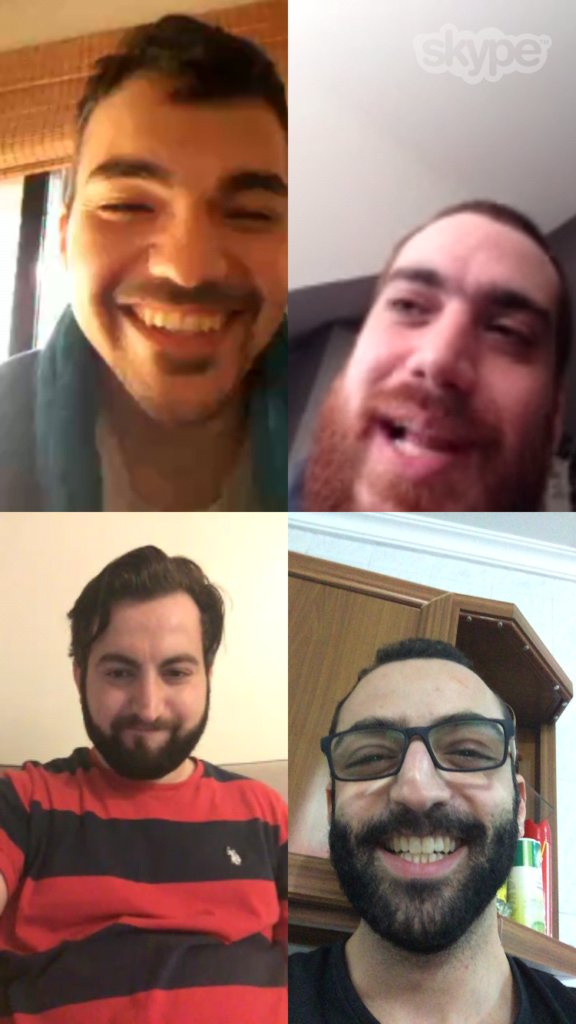
Reflections
What helped you get through the hardest times?
During and after my treatments, I was started on low-dose Xanax based on my oncologist’s recommendation. But I believe my family, nurses and my friends were the true supporters during my darkest times.
The first few years after the BMT were hard on me, and I had to go to a psychiatrist in order to just have someone to talk to about my fears and concerns. I wanted to give my family a break from the cancer horrors. Besides, they suffered enough.
How important is it to have caregivers?
I wouldn’t be here if it wasn’t for them. It is one of the most crucial elements during a treatment process.
Were you able to ask people for support?
I was lucky enough to find people around me all the time. During my hospital stays in Lebanon, when I was in good shape, nurses used to take me for a walk and pretend we were going for a trip or something, which made me crack up in laughter.
I believe that God knows that we, cancer patients, are in need of support during our treatments, and he blesses us with kind people.
How has cancer impacted your life?
Cancer helped me to become a new person. It changed my whole life perspective. I became more compassionate as a person, and I valued life more than ever.
One of the things that people do not talk about is the “chemo brain” aftereffect, which I personally suffer from. I believe a lot of people suffer from that, and it is not addressed properly.
This is why we are starting a new program in our region to spread awareness about this side effect.
How has your experience as a patient helped you now as a doctor?
Working in a cancer center after my own experience was a challenge for me. I applied for the position in order to help other patients and ease their pain, but I was afraid that I would crumble with all the flashbacks that I would have.
Thankfully, I was able to support my patients and to establish strong bonds with each and every single one of my fellow cancer patients, trying my best to be there for them and their families.
Whenever I see a patient who gave up on life and is ready to raise his or her white flag, I share some of my story, which provides them with that extra dose of hope knowing that people do survive from that vicious disease.
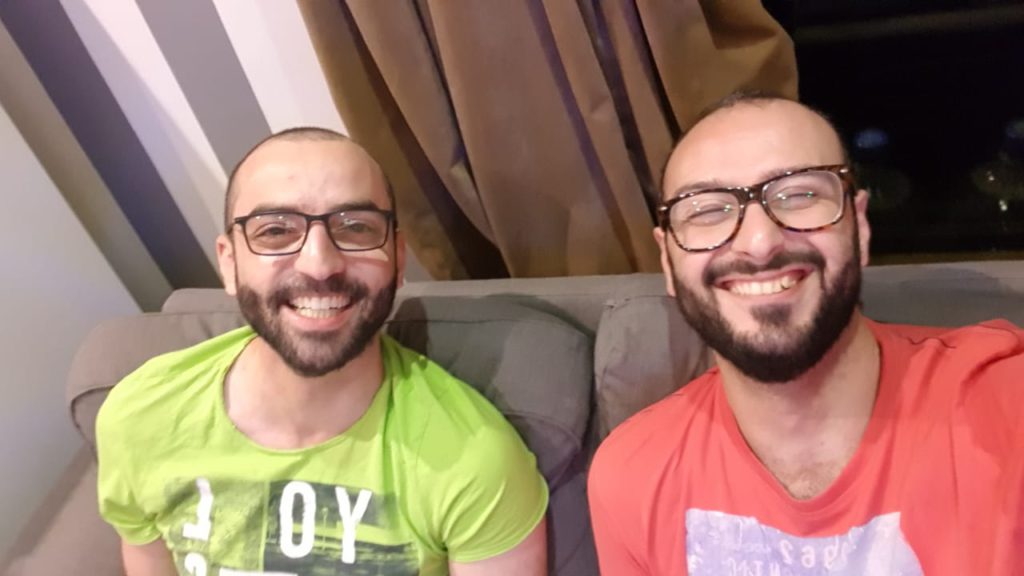
Last message to other patients
The word “cancer” is scary, and you have every right to be frightened, but do not let that fear take over you. Use this fear to harness the needed power to overcome this illness and rise stronger and tougher than ever before.
You will have bad days, but please make sure that you are not alone. A family member, a friend, a spouse, a son or even a neighbor can provide you with help and support when needed.
You are strong, and you will make it out of this nightmare, but do not be afraid to ask for help and support from those whom you love. They will provide you with hope and strength, and they will ease your pains. You do not have to fight this battle alone.
So stay strong, keep your head up high, and I will be one of the many survivors waiting for you at the end of the tunnel.

Inspired by Moe's story?
Share your story, too!
Moe hosts his own YouTube channel. Check it out here:
Hodgkin’s Lymphoma Stories
Jessica H., Hodgkin’s Lymphoma, Stage 2
Symptom: Recurring red lump on the leg (painful, swollen, hot to touch)
Treatment: Chemotherapy
Riley G., Hodgkin’s Lymphoma, Stage 4
Symptoms: • Severe back pain, night sweats, difficulty breathing after alcohol consumption, low energy, intense itching
Treatment: Chemotherapy (ABVD)
Amanda P., Hodgkin’s Lymphoma, Stage 4
Symptoms: Intense itching (no rash), bruising from scratching, fever, swollen lymph node near the hip, severe fatigue, back pain, pallor
Treatments: Chemotherapy (A+AVD), Neulasta
Brescia D., Hodgkin's Lymphoma
Symptom: Swelling in the side of her neck
Treatment: Chemotherapy: 6 rounds of ABVD
